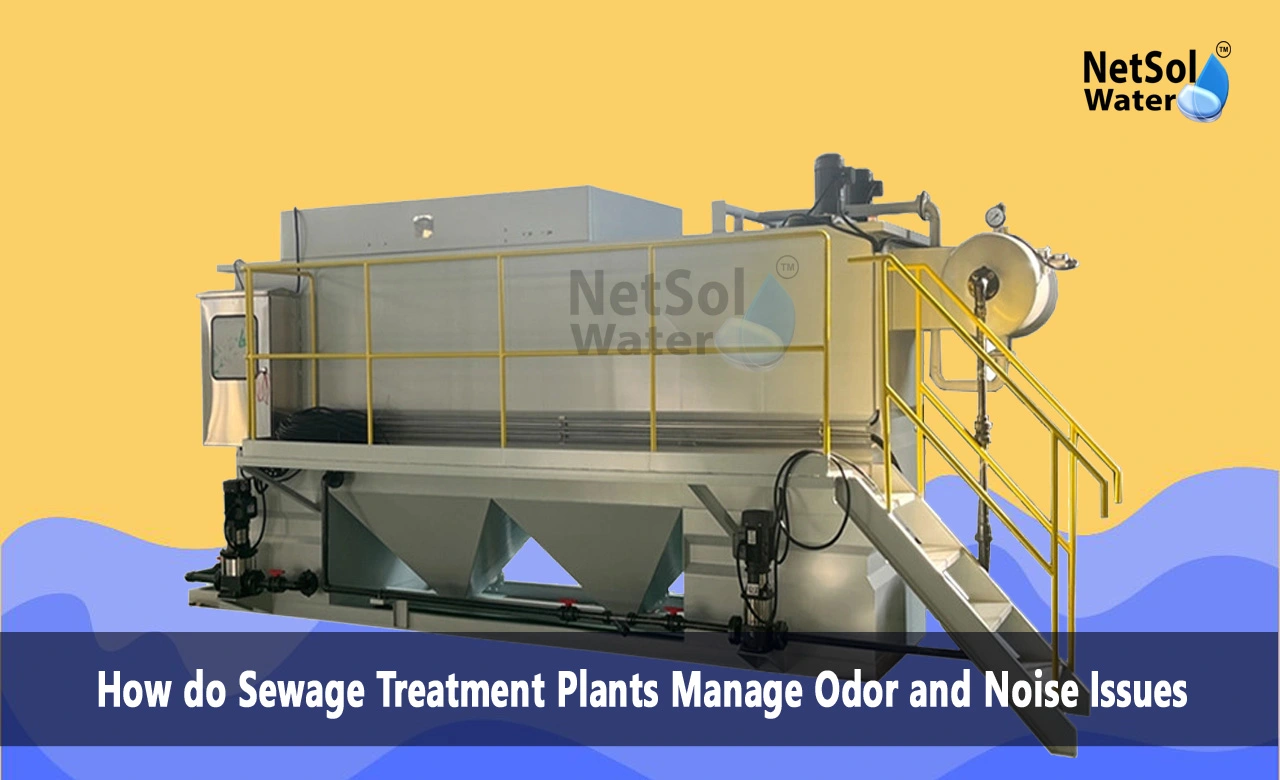How do Sewage Treatment Plants Manage Odor and Noise Issues?
Sewage treatment facilities are necessary to recycle wastewater and to protect the environment and public health. However, processing the effluent streams produces significant odours and noise as byproducts. Sewage contains organic materials that emit unpleasant odours, mainly from hydrogen sulfide, ammonia, and organic sulfur compounds. Mechanical equipment required for aeration, mixing, pumping, and solids handling also generates noise that often exceeds residential limits. As sewage treatment plants expand their capacities and move closer to populated areas, it is essential to proactively manage both noise and nuisance odours to operate as a good neighbour.
We will examine different strategies and technologies sewage treatment plants employ to mitigate odour and noise pollution.
Odor Management Approaches
Biological Treatment and Chemical Scrubbing
Sewage treatment plants primarily manage odours through two complementary methods - biological treatment and chemical scrubbing systems. Many facilities contain the foul compounds by collecting foul air from headworks, sludge handling areas, and enclosed process tanks, then routing it through biological treatment units utilising microbes to metabolise and degrade the odour-causing compounds. Biofilters, scrubbers, and trickling filters provide engineered environments optimised for these odour-eating microorganisms.
In parallel, chemical scrubbers remove odour compounds via oxidation reactions using chlorine, potassium permanganate, hydrogen peroxide, ozone, or sodium hypochlorite solutions as the scrubbing media. Activated carbon or potassium permanganate-impregnated media also adsorbs residual odours. Multi-stage systems often combine biotreatment with chemical scrubbing for higher removal efficiencies up to 99%.
Advanced Oxidation Processes
Building upon chemical scrubbing capabilities, advanced oxidation processes utilising hydroxyl radicals provide potent odour abatement. Approaches such as UV light with hydrogen peroxide, ozone with UV, or ozone with hydrogen peroxide generate highly reactive hydroxyl radicals that rapidly break down even the most complex odour molecules into odourless byproducts like carbon dioxide and water.
While capital-intensive, advanced oxidation enables extremely high odour removal rates up to six times better than bio-treatment alone. These systems also reduce overall chemical usage compared to traditional caustic scrubbers. Facilities with major odour issues or located in highly populated neighbourhoods may favour the stronger odour control of advanced oxidation processes despite higher costs.
Adsorbents and Masking Agents
When biological or chemical control systems prove insufficient, sewage plants implement adsorbent filters and deodorising sprays to further manage remaining fugitive odours. Granular activated carbon, chemically impregnated synthetic media, and pozzolans like volcanic ash can effectively remove trace odorants as an air polishing step before atmospheric release. Masking agents and deodorising mists neutraliseodours through fragrance additives.
While limited in handling concentrated malodorous sources, adsorbents and masking agents provide a safety net around targeted areas of potential community odour impact. These localised measures prove valuable for managing intermittent odours from solids handling areas or during periods of process equipment outages or upsets.
Noise Control Methods
In complementing odour mitigation efforts, sewage treatment plants utilise various physical barriers, equipment modifications, and operational practices to reduce noise pollution.
Enclosures and Sound Barriers
Contained concrete structures shielding noisy equipment from blowers, compressors, and pumps help attenuate and absorb much of the noise generated inside the plant. Outdoor noise sources are often surrounded by sound barrier walls, mounds, or vegetation buffers to block noise transmission. Inlet/outlet duct silencers also reduce noise propagating through air-handling equipment and blowers.
Equipment Noise Controls
At the source, sewage plants deploy low-noise pumps, compressors and blowers using optimised blade and impeller designs. Intake/exhaust mufflers, pipe lagging, anti-vibration mounts, and other industrial noise control accessories minimise vibration and casing noise from mechanical equipment. Facilities also strategically locate loud machines in interior and sub-surface areas with concrete walls serving as noise insulation.
Operational Measures
On the procedural side, facilities limit operating schedules for noisy equipment during nighttime and noise-sensitivity periods. They also establish truck routes and designated areas for material handling to reduce mobile noise sources around property boundaries and neighbourhoods. Comprehensive noise monitoring plans ensure compliance with local ordinances and guide the optimisation of mitigation controls. Community engagement and prompt response to noise complaints build positive community relations.
Conclusion
Modern sewage treatment facilities must manage not only sewage but also odour and noise as part of their operations in order to maintain good relations with surrounding communities. Toaddress the various sources of odour and noise across the plant's layout, a multi-pronged approach that utilises biological, chemical, and operational control systems is found to be most effective. Proactive odour and noise control programs become increasingly essential as residential development encroaches near treatment facilities, in order to uphold quality of life and public acceptance. Fortunately, sewage plant operators now have access to a comprehensive toolbox of odour control and noise abatement technologies to mitigate these traditional nuisances.
To explore customised Commercial RO plants, Industrial RO plants, ETP or STP solutions for your needs in your areas and nearby regions, contact Netsol Water at:
Phone: +91-965-060-8473, Email: enquiry@netsolwater.com



